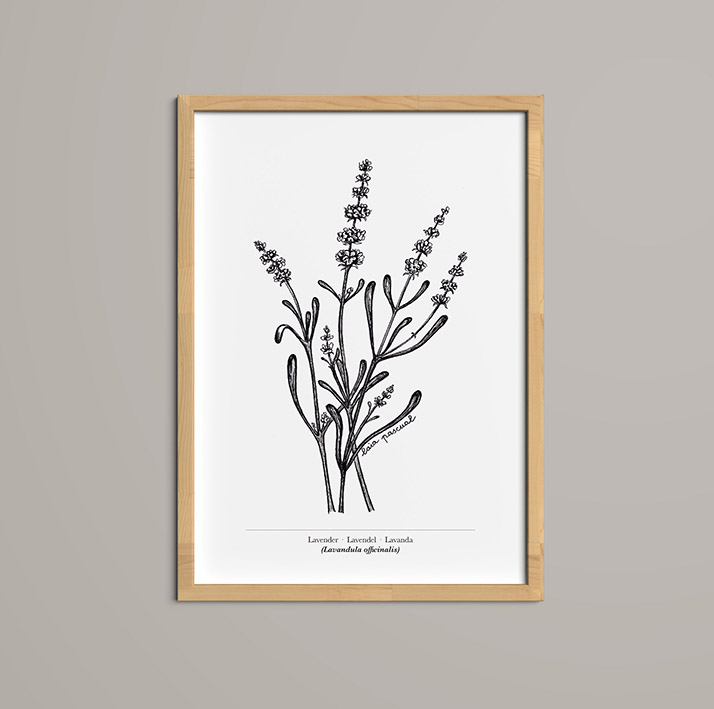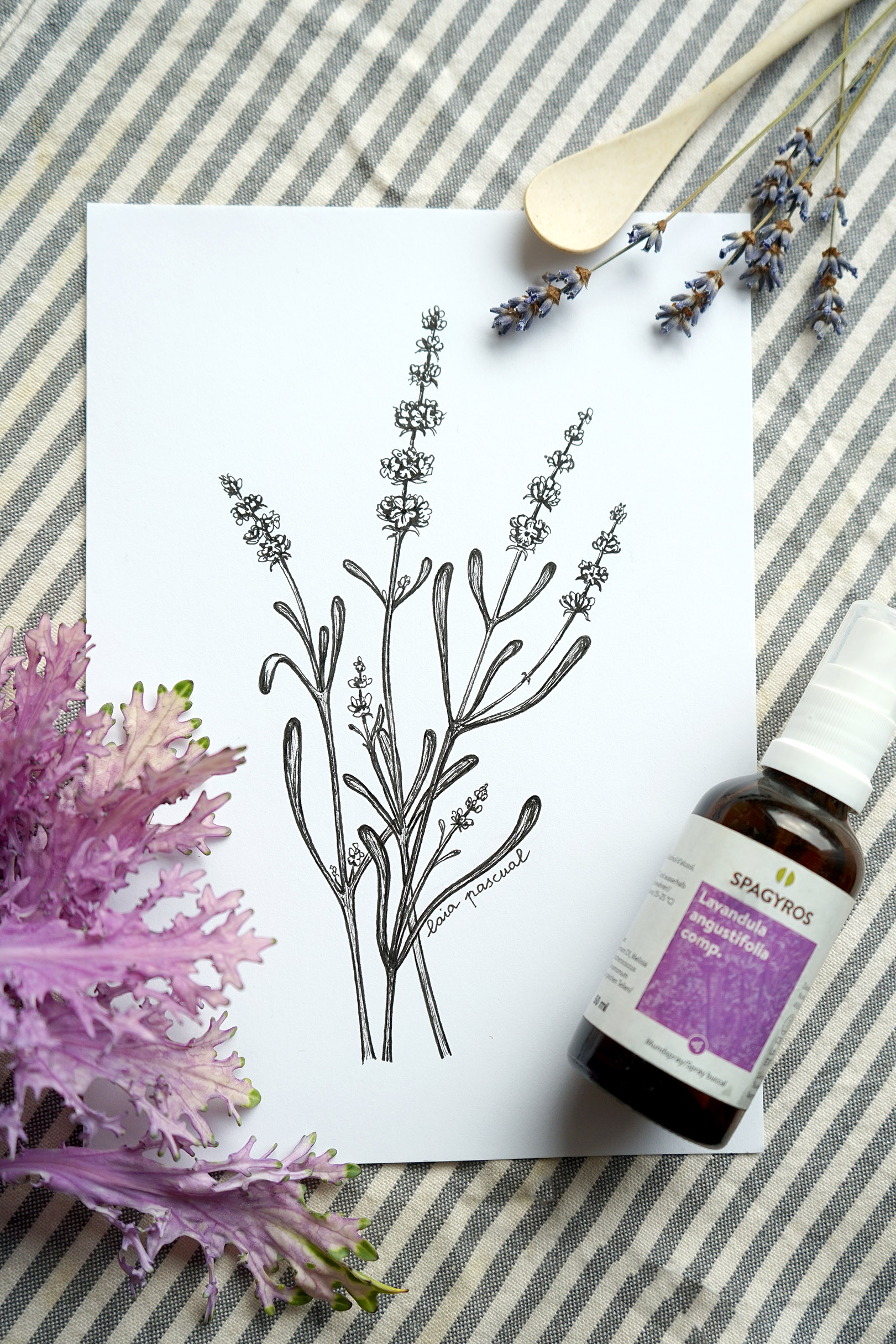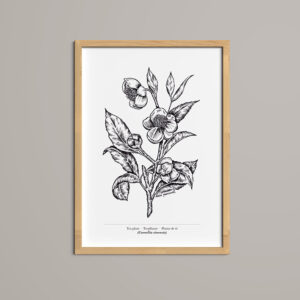CHF 25.00
Lavender · Lavendel · Lavanda (Lavandula officinalis)
People usually associate lavender with two specific traits: its fragrance and its color. But you may not know that the lavender flower and the oil derived from it have long histories in herbal medicine.
Its name derives from the Latin root “lavare,” which literally means “to wash.”The earliest recorded use of lavender dates back to ancient Egypt. There, lavender oil played a role in the mummification process. During later times, lavender became a bath additive in several regions, including Persia, ancient Greece, and Rome. These cultures believed that lavender helped purify the body and mind.
Lavender is grown in northern Africa and the Mediterranean mountains, often for extraction of its essential oils, commonly used in aromatherapy. The fragrance helps promoting calmness and wellness. It’s also said to help reduce stress, anxiety, and possibly even mild pain.
It is believed to have antiseptic and anti-inflammatory properties, which can help to heal minor burns and bug bites. The herb is highly regarded for skin and beauty and is commonly used in fragrances and shampoos to help purify the skin.
Some studies suggest that consuming lavender as a tea can help digestive issues such as vomiting, nausea, intestinal gas, upset stomach, and abdominal swelling. In addition to helping with digestive problems, lavender is used to help relieve pain from headaches, sprains, toothaches, and sores. It can also be used to prevent hair loss.
- Technique: Ink on paper
- Print: Natural off-white 325g paper, FSC (without frame)
- Description: English, German, Spanish and the botanical name in latin
- Size: 148 x 210 mm (A5)






